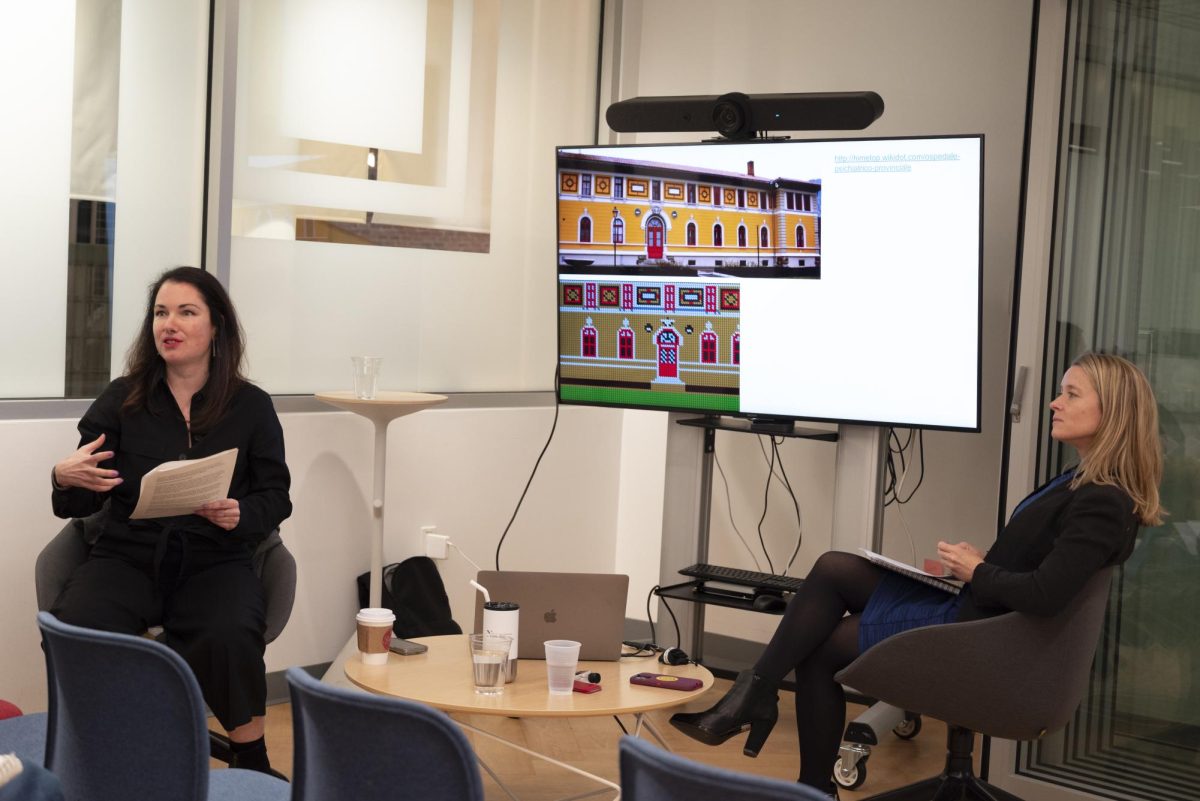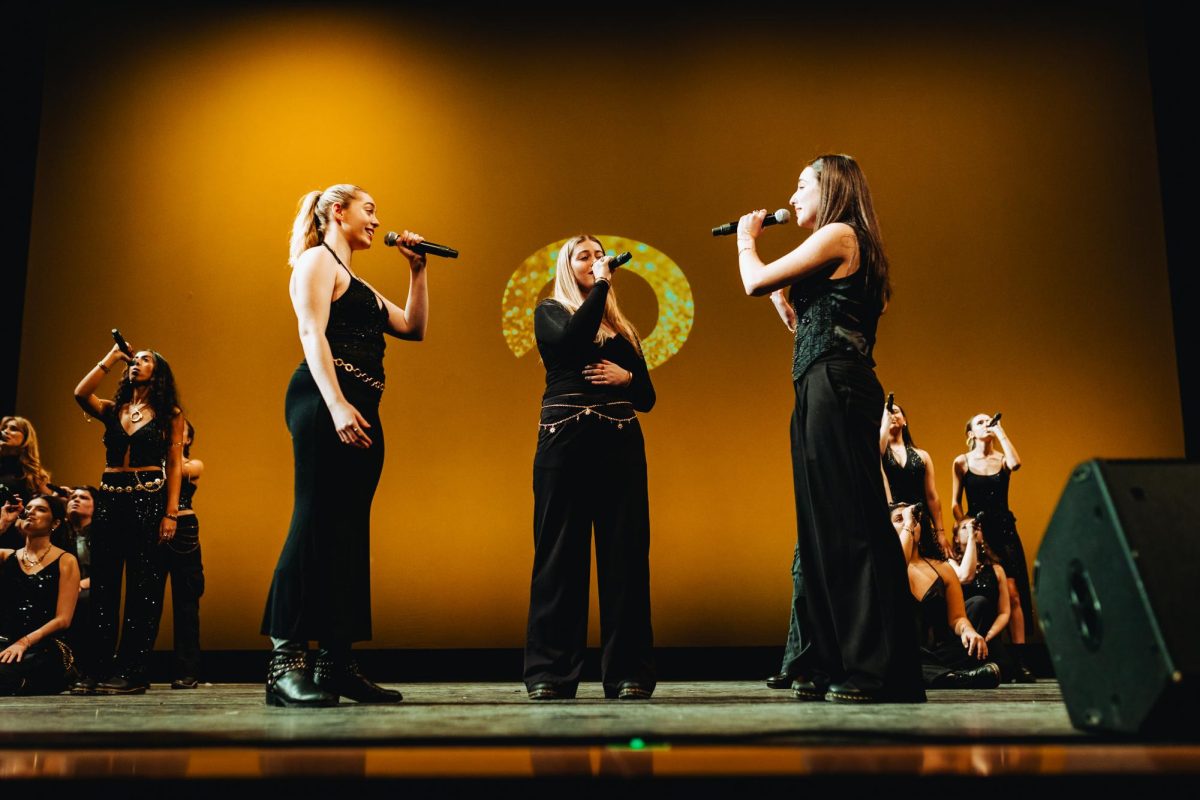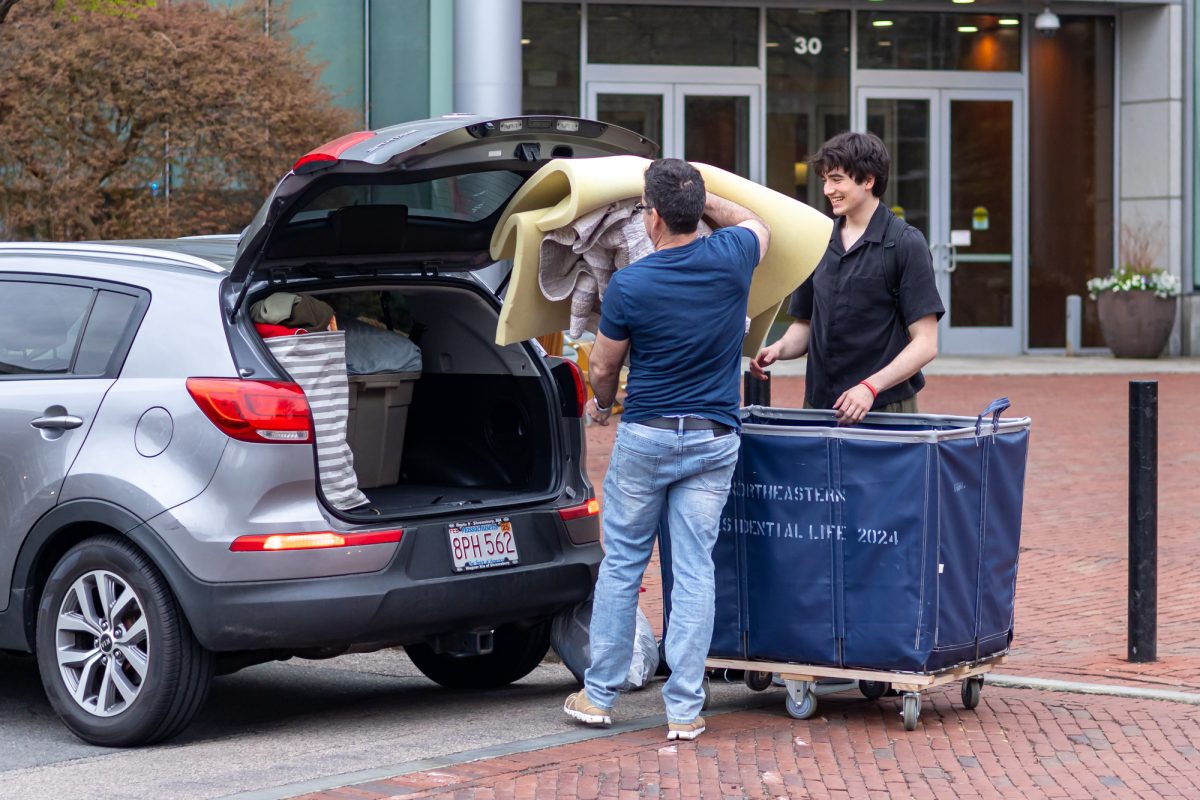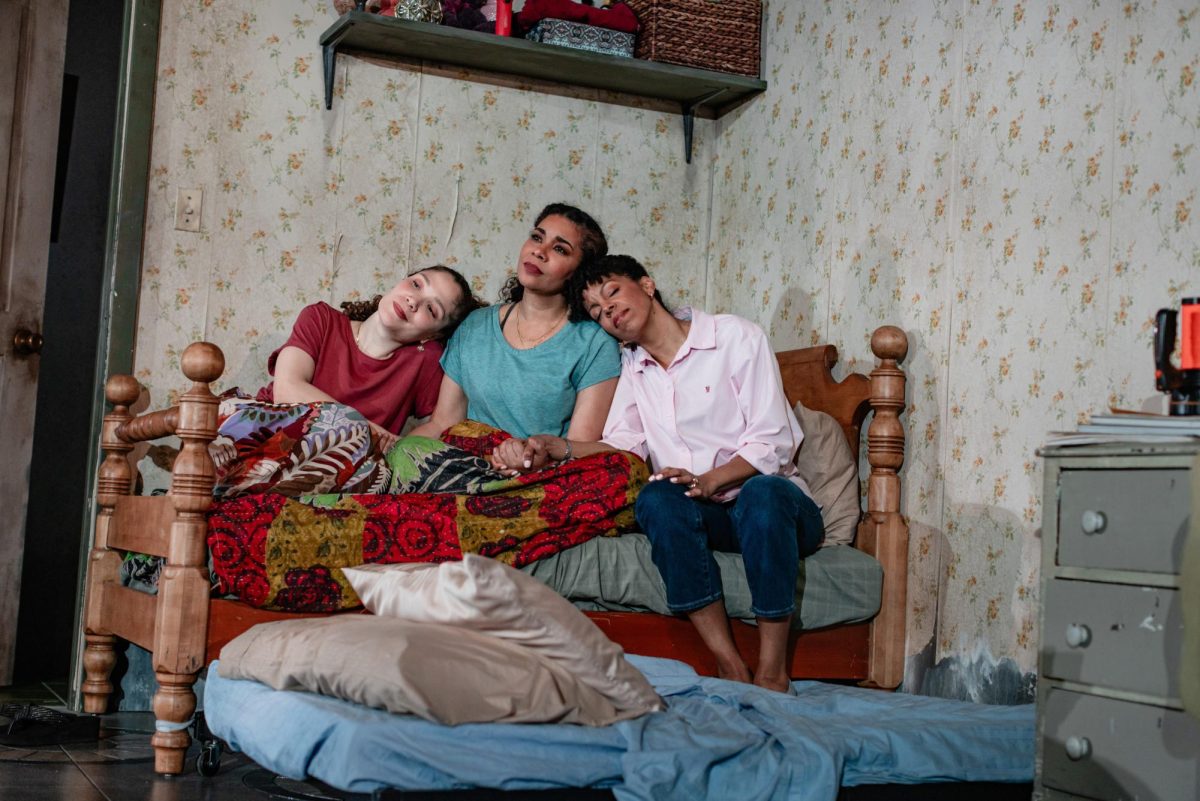Unraveling her first solo exhibition in Boston, artist Cat Mazza hosted a discussion of her works at the Northeastern Center for Design March 21. “Cat Mazza: Network” debuted in November 2024 and will be displayed at Northeastern’s Gallery 360 until mid-April . The exhibition uniquely combines machine knitting technologies with social commentary, woven together across three major pieces.
A central work is “Labor Sister Sampler,” a 10-foot-long knitted map of the United States that depicts key labor and feminist histories. Commissioned by the 2016 Hillary Clinton presidential campaign, the textile artwork is paired with textual artifacts displayed on an adjacent wall, inviting visitors to engage with the exhibit’s historical narratives. The map, hidden in storage until 2024, memorialized different archival representations of the American labor movement, spanning from 1824 in Pawtucket, Rhode Island to 1999 in Seattle.
The key events within the sampler create a chronological and cohesive narrative of female labor-driven change. Mazza employed “KnitPro” technologies, which she developed to translate digital images into stitchable patterns. An interactive timeline available online further connects these historical moments.
“The exhibition was built out of some core themes we identified — labor and social change as well as networks and communities,” said Amy Halliday, a gallery curator and presenter. Reflecting on the curatorial process, she said she was “drawn to the combination of technical virtuosity and beauty of [Mazza’s] works” as well as “the depth of concept and her drawing on lived experience.”
Mazza’s work also delves into psychiatry and mental health, starting with “By & By: With Psychedelic Features.” Mazza described this animated piece as “a psychedelic journey through different psychiatric therapeutic communities” and mentioned her personal experiences with bipolar disorder, which informed her creative processes and subject choice for the exhibit. As an artist, she entangles her experiences with research-oriented, historically-informed understandings and innovative techniques.
The work was crafted with “Knitoscope,” a custom program designed by Mazza and programmer Shawn Lawson that maps animated stitches over video and archival footage. This meticulous process transforms each frame into stitches pixel by pixel, creating a narrative that links psychiatric histories to a custom soundtrack. “By & By” reimagines both digital and analog media, telling the story of two computers navigating the complex realm of psychiatric care. Key frames feature needlepoint visualizations of psychiatric institutions and the multisensory experiences of altered and augmented realities.
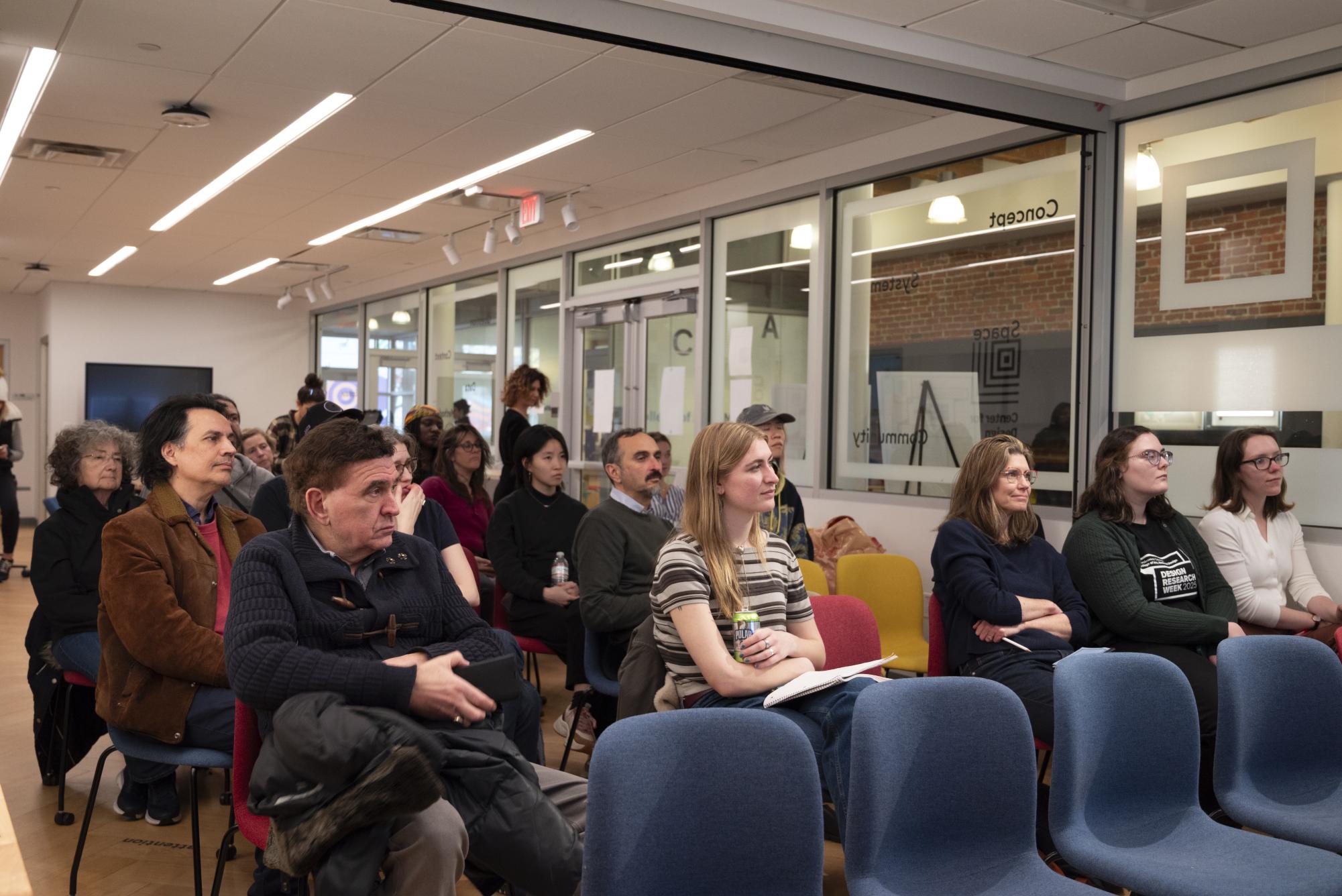
“There’s a long history of gendered arts and textiles not necessarily getting the appreciation or study they deserve,” said Juliana Rowen Barton, a curator and the Center for Arts director. “I was excited to bring Northeastern these digital technologies and how they connect to more analog things, a thematic illustration of these ideas around labor and disability.”
Mazza expressed the joy she experienced during the generative processes of transforming and transfiguring media.
“There’s this magic when you combine textiles and technology that I just really enjoy,” she said.
The final key installation features a series of knitted balaclavas, each showcasing patterns derived from the writings of individuals who revolutionized psychiatric care. Mazza took excerpts from the writings of Italian psychiatrist Franco Basaglia, Scottish psychiatrist R.D. Laing, American psychologist Kay Redfield Jamison and French historian Michel Foucault. She then translated these into Morse code, converting them into a senary code which produced knitted visualizations in color-coordinated patterns.
At its basic levels, knitting operates in binary, historically serving as the basis for the earliest computer programs and by covert operatives during World War II. This historical and research-rich generation grounds Mazza’s exploration of women’s craftsmanship across time and geographies.
“Come to the exhibition and let it wash over you,” Halliday said. “It rewards time and attention.”
“Cat Mazza: Network” is on view through April 12.
Editor’s Note: This article was updated Thursday, April 10 at 8 p.m. to correct a spelling error, correctly name the Center for Design and more accurately detail the design processes for knitPro and Knitoscope.



